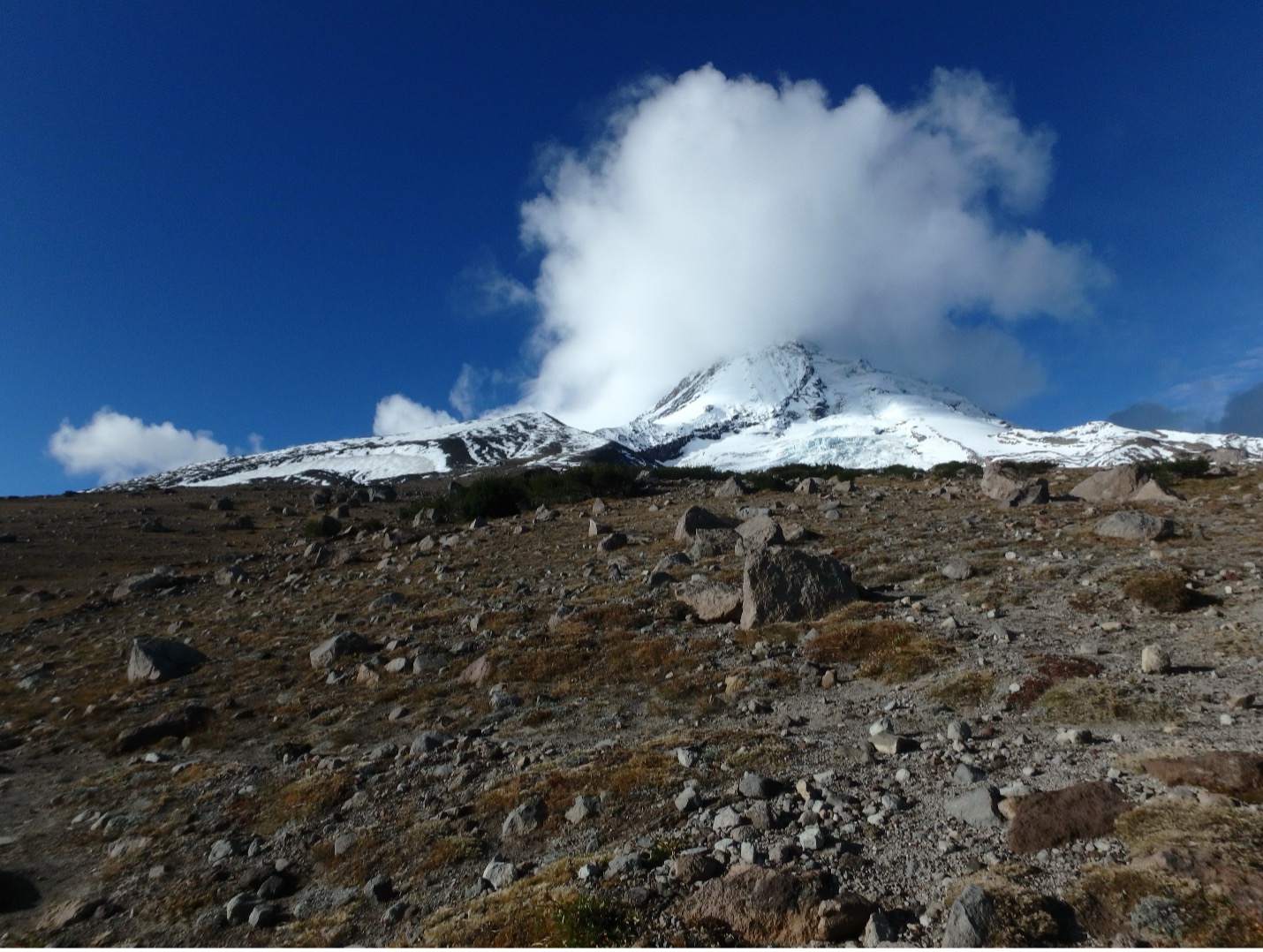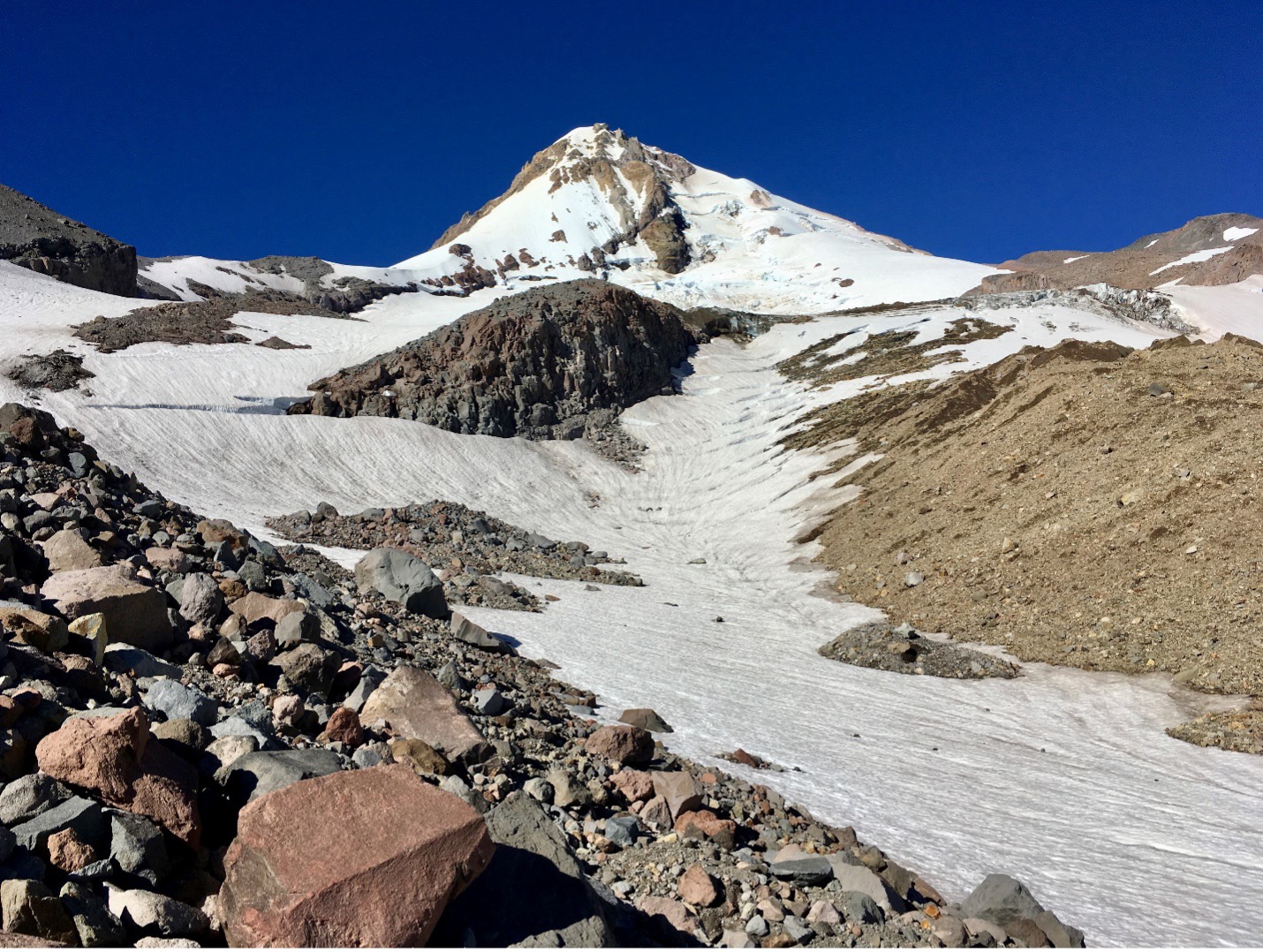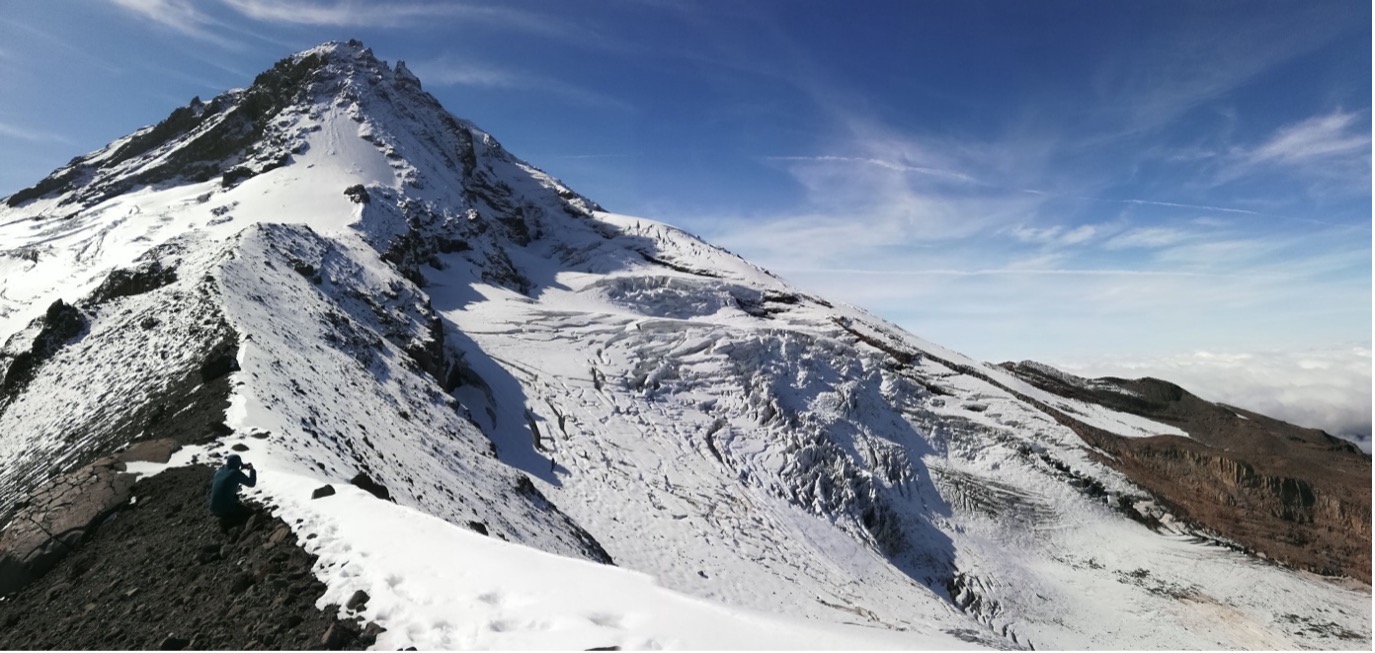Melting glaciers, shifting waters: Unveiling the impact of alpine glacial retreat due to climate change on groundwater and ecosystems
01-28-2025

A view of Mount Hood, picture taken by Jordyn Miller
A Purdue PhD student organized a virtual international outreach event with colleagues in Glacier National Park, Mount Hood, and Peru to study the impacts of melting alpine glaciers on mountain groundwater systems.
Alpine glacier meltwater is vital for human and ecological systems in high-mountain regions, but due to climate change, glaciers are retreating rapidly worldwide. Ice loss primarily occurs through melting and sublimation, with meltwater contributing to surface runoff or groundwater recharge. However, the role of meltwater in groundwater recharge and its broader impact on mountain groundwater systems remain poorly understood, with few studies addressing these processes at local to regional scales.
Ayobami Oluwadunsin Oladapo, a PhD student in the Department of Earth Atmospheric and Planetary Sciences (EAPS) at Purdue University, was the Lead Organizer of this unique virtual outreach event. Dr. Marty D. Frisbee, an associate professor in the EAPS department at Purdue, was the Co-Organizer who connected Oladapo with the Instituto Nacional de Investigación en Glaciares y Ecosistemas de Montaña (INAIGEM, National Institute for Research in Glaciers and Mountain Ecosystems) in Lima, Peru.


The outreach event, "Recent Advances in Our Understanding of Hydrogeological Processes in Deglaciating Alpine Watersheds," held virtually had an audience that included participants from Purdue University, the University of Minnesota, Glacier National Park, Mount Hood National Forest, and colleagues INAIGEM in Lima, Peru.
Oladapo gave a talk on her strontium isotope 87Sr/ 86Sr to identify rock units that support groundwater flowpaths and flowpath connectivity in her study areas (Glacier National Park, Montana, USA, and Mount Hood National Forest, Oregon, USA). Dr. Marty Frisbee talked about using carbon isotopes as indicators of groundwater recharge from glacial meltwater.

Image of Glacier National Park, Montana by the National Park Service (NPS)
Dr. Maria Custodio, a professor at the Faculty of Human Medicine at the Universidad Nacional del Centro del Peru, gave a talk on her studies on environmental DNA and its relationship with water resources in Peru.
Christopher Hansen, a Ph.D. student in the Department of Plant and Microbial Biology at the University of Minnesota, also gave a talk on his research at Glacier National Park in Montana and Mount Hood National Forest in Oregon, which examined how microbial communities in alpine springs respond to glacial meltwater and the surrounding environment.
Albert Mamani Larico, a water specialist at INAIGEM in Lima, Peru, discussed their ongoing research project on surface-groundwater interaction in Central Andes Cordillera.
Organizing such an event with international collaborators presented unique challenges, but the efforts paid off thanks to Diana Lucia Pinto, a Visiting Scholar with EAPS and a Colombian undergraduate working in Frisbee's lab, who served as an interpreter. Pinto facilitated seamless communication, ensuring the event ran smoothly. “Virtual international outreach events can be done, but it takes careful planning and patience from all participants,” says Oladapo.
“The goal of our virtual outreach event was to bring together hydrogeologists, environmental engineers, microbiologists, biologists, and water resources engineers to present their recent findings on projects that have been carried out in Glacier National Park, Montana, Mount Hood National Forest, Oregon, and the Andes Mountains in Peru,” explains Oladapo.

A view from of Mount Hood, picture taken by Jordyn Miller
The research explored where meltwater from glaciers goes, how it moves through the ground, interacts with rivers and groundwater, the process affecting glacial meltwater isotopic fingerprints, and its effects on the alpine watershed ecosystems. The outreach event shared research from the U.S. and Peru, aiming to understand how alpine hydrological and hydrogeological systems are affected by and adapting to glacier loss.
“This collaboration will benefit local communities whose livelihoods depend on mountain glaciers, ecosystems scientists who can gain a greater awareness of the interactions between glacier meltwater and groundwater processes, and resources managers who can gain important information on how the gradual loss of glacier meltwater may affect alpine water resources,” says Oladapo. “The findings can inform policy and management strategies for alpine communities, enabling them to protect and conserve these resources, as well as inform water resource management decisions by park managers and resource management agencies in Glacier National Park, Mt Hood, and Peru.”
“Mountains are often considered the world’s water towers, and the hydrogeology and hydrology of the mountains are changing rapidly as a result of climate change. My work investigated how the resulting glacial melt affects the flow processes in the high mountains and the effect it will have on the alpine human and ecological communities in the future,” explains Oladapo.
Oladapo’s research focused on the alpine watersheds in Glacier National Park, Montana, USA, and Mount Hood National Forest, Oregon, USA. These two study areas are also important to local and regional Native American tribal lands. Water samples from springs at different heights were collected and tested for environmental isotopes and geochemical markers to answer two key questions:
- Where is groundwater stored in the mountains?
- What factors affect the preservation of the isotopic signature of glacial meltwater?
Answering these questions revealed where groundwater moves through the mountain's rock layers and what controls its flow, including how water travels from high to low elevations. It also showed whether glacial meltwater recharge affects groundwater across large areas or near glaciers in high mountain regions. It represents a first step toward rigorously examining how the isotopic fingerprint of glacial meltwater is preserved in mountain groundwater systems.

A view of Mount Hood, picture taken by Jordyn Miller
“The environmental isotopes and geochemical tracers used include the strontium ratios (87Sr/86Sr), tritium (3H), and chlorine-36 (36Cl/Cl),” says Oladapo. “With the combined use of these isotopes coupled with the existing geologic and geospatial data of the study areas, my research was able to provide more information about how the loss of glacial ice volume in alpine regions will impact groundwater availability, ecosystem integrity, and sustainable water management practices as we approach an ice-free future.”
The outreach event showcased Purdue University's commitment to international outreach, education, and research. It fulfilled the broader impacts planned in the National Science Foundation (NSF EAR 1904075 and 1904159) grant and the Hydrologists Helping Others (H2O) Grant. NSF funding was awarded to support the work of Dr. Marty Frisbee at Purdue University and Dr. Trinity Hamilton at the University of Minnesota. Oladapo was awarded the Hydrologists Helping Others (H2O) Grant in 2023. This grant from Purdue University supports graduate students in hydrogeology.
About the Department of Earth, Atmospheric, and Planetary Sciences at Purdue University
The Department of Earth, Atmospheric, and Planetary Sciences (EAPS) combines four of Purdue’s most interdisciplinary programs: Geology & Geophysics, Environmental Sciences, Atmospheric Sciences, and Planetary Sciences. EAPS conducts world-class research, educates undergraduate and graduate students, and provides our college, university, state and country with the information necessary to understand the world and universe around us. Our research is globally recognized, our students are highly valued by graduate schools, employers, and our alumni continue to make significant contributions in academia, industry, and federal and state government.
Written by: David Siple, Communications Specialist, Purdue University Department of Earth, Atmospheric, and Planetary Sciences